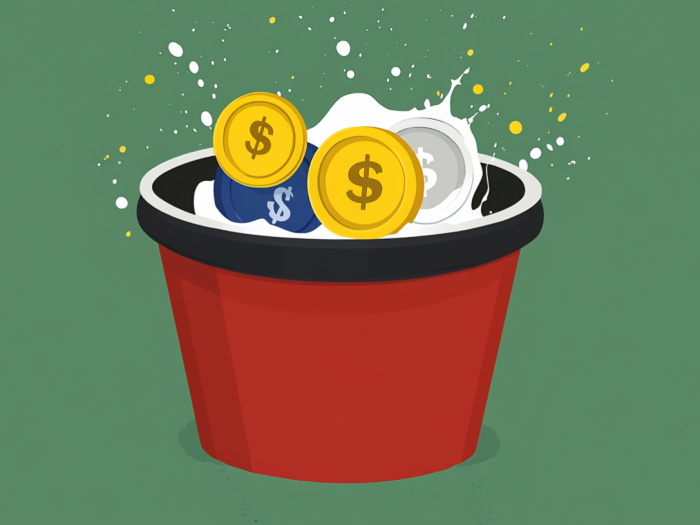The retirement bucket strategy is a popular approach to managing retirement funds, designed
to provide both current income and long-term growth while mitigating risk. It involves
dividing your portfolio into different “buckets” based on time horizons and risk tolerance.
This article explores how to implement the retirement bucket strategy to optimize your
retirement finances.
Understanding the Retirement Bucket Strategy
The retirement bucket strategy involves dividing your retirement savings into three
distinct buckets:
- Bucket 1: Short-Term (Cash/Short-Term Bonds)
- Bucket 2: Intermediate-Term (Balanced Funds/Bond Funds)
- Bucket 3: Long-Term (Growth Stocks)
Purpose of Each Bucket
Bucket 1: Short-Term (1-2 Years)
This bucket holds cash and highly liquid, low-risk investments to cover your immediate
living expenses.
- Assets: Cash, money market accounts, short-term bond funds, CDs.
- Goal: Stability, liquidity, and principal preservation.
- Use: Withdrawals for daily living expenses.
Bucket 2: Intermediate-Term (3-7 Years)
This bucket provides a balance of income and some growth potential.
-
Assets: Intermediate-term bond funds, balanced funds, dividend
stocks. - Goal: Income generation and moderate growth.
- Use: Funds to replenish Bucket 1 as needed.
Bucket 3: Long-Term (7+ Years)
This bucket focuses on long-term growth to outpace inflation.
- Assets: Growth stocks, stock index funds, real estate.
- Goal: Long-term growth and capital appreciation.
- Use: Funds to replenish Bucket 2 as needed.
Implementing the Retirement Bucket Strategy
1. Assess Your Expenses
Determine your estimated annual living expenses in retirement.
2. Allocate Your Assets
Divide your retirement savings into the three buckets based on your time horizon and
risk tolerance.
3. Manage Your Withdrawals
-
Withdraw from Bucket 1: Initially, withdraw funds from your short-term
bucket to cover your living expenses. -
Replenish Bucket 1: As needed, replenish Bucket 1 by selling assets from
Bucket 2. -
Replenish Bucket 2: Periodically, replenish Bucket 2 by selling assets
from Bucket 3.
4. Rebalance Your Portfolio
Periodically rebalance your portfolio within each bucket to maintain your desired asset
allocation.
Example Allocation
(This is a simplified example. Adjust based on your individual circumstances.)
- Bucket 1: 20%
- Bucket 2: 30%
- Bucket 3: 50%
Benefits of the Retirement Bucket Strategy
-
Reduced Sequence of Returns Risk: Helps mitigate the impact of market
downturns early in retirement. - Income Stability: Provides a stable income stream from Bucket 1.
- Growth Potential: Allows for long-term growth through Bucket 3.
-
Flexibility: Offers flexibility to adjust your spending and portfolio
based on market conditions. -
Psychological Comfort: Can provide peace of mind by separating funds
for different purposes.
Risks and Considerations
-
Inflation Risk: Inflation can erode the purchasing power of your
savings. - Market Volatility: Stock market fluctuations can impact Bucket 3.
-
Investment Choices: The specific investments within each bucket
influence performance. - Complexity: Requires careful planning and monitoring.
Conclusion
The retirement bucket strategy can be a valuable tool for managing your finances in
retirement. By strategically allocating your assets and understanding the purpose of each
bucket, you can create a more stable and resilient retirement income plan. However, it’s
essential to consider your individual circumstances and seek professional advice when
needed.
Related Keywords
Retirement bucket strategy, retirement income strategy, retirement portfolio, retirement
planning, retirement income, retirement investments, safe withdrawal rate, retirement
income management, retirement asset allocation, retirement buckets.
Frequently Asked Questions (FAQ)
1. What is the retirement bucket strategy?
The retirement bucket strategy is a method of dividing your retirement savings
into different “buckets” based on time horizons and risk tolerance.
2. How many buckets are typically used in this strategy?
The strategy typically uses three buckets: short-term, intermediate-term, and
long-term.
3. What types of assets are held in Bucket 1 (Short-Term)?
Bucket 1 holds cash and highly liquid, low-risk investments like money market
accounts and short-term bond funds.
4. What is the purpose of Bucket 1?
Bucket 1 is designed to provide stability and cover your immediate living
expenses.
5. What types of assets are held in Bucket 2 (Intermediate-Term)?
Bucket 2 holds intermediate-term bond funds, balanced funds, and dividend
stocks.
6. What is the purpose of Bucket 2?
Bucket 2 aims to provide a balance of income generation and moderate growth.
7. What types of assets are held in Bucket 3 (Long-Term)?
Bucket 3 holds growth stocks, stock index funds, and potentially real estate.
8. What is the purpose of Bucket 3?
Bucket 3 focuses on long-term growth and capital appreciation to outpace
inflation.
9. How do I make withdrawals using the bucket strategy?
You initially withdraw from Bucket 1 and replenish it periodically from Bucket 2,
and then replenish Bucket 2 from Bucket 3.
10. What are the benefits of using the bucket strategy?
Benefits include reduced sequence of returns risk, income stability, growth
potential, flexibility, and psychological comfort.



